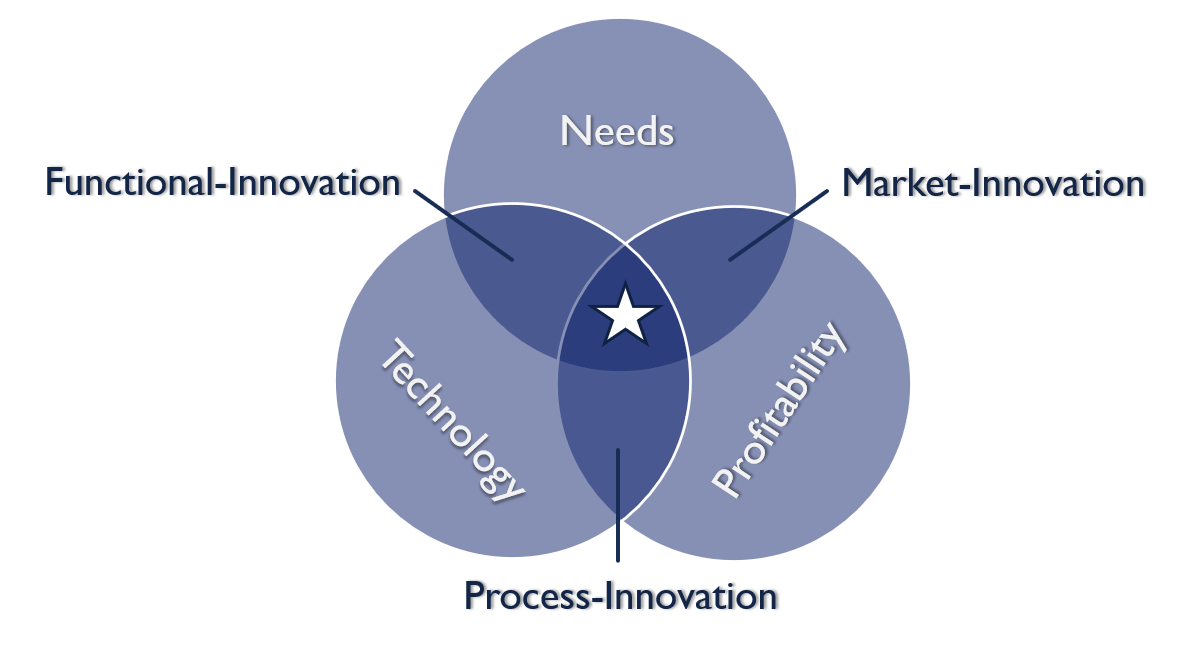Alongside digitization, innovation is probably one of the most frequently used buzzwords in business jargon in recent years. But what actually is an innovation?
It is helpful to distinguish between an innovation and an invention in the true sense of the term. A technical discovery without direct economic application or benefit is an invention.
A successful market introduction, on the other hand, is an innovation. However, innovations are not limited to the commercialization of technical inventions, but include all successful innovations on the market.
Two Examples
The invention of the transistor in 1947 was probably one of the most important inventions of the last century. Among other things, it laid the foundation for the computer and ultimately for what we now call digitization. At that time, however, the invention was smiled at and no practical use was seen. Even the inventors only believed in niche applications, e.g. in the military sector. The first innovation to come out of this invention was the small portable transistor radio, an existing product (tube powered radios had already been around for around two decades) which became mobile as a result of this innovation and was successfully launched on the market by Texas Instruments.
In my view, the biggest innovation in banking over the last 25 years is the exchange traded index fund. According to Investopedia, the ETF (Exchange Traded Fund) is today the most popular investment vehicle for individual as well as institutional investors. Here, it was not a fundamentally new technology that enabled the innovation, but a user-oriented idea implemented through the clever combination of existing building blocks such as passive investment mandates for institutional investors and electronic exchanges that brought the enormous market breakthrough.
The second example shows that innovations do not require a directly preceding invention. It is much more often the creative linking of already existing things, without inventive activity, to satisfy a need in the market.
Three types of Innovations

One possible classification of innovations is into market innovations, functional innovations and process innovations.
Market innovations here are new ways of bringing supply and demand together or how to get to the consumer. Amazon in the early years would be a popular example here, which shows how you can completely redesign a market without a new product, the book in this example.
Functional innovations cover needs through technical possibilities. The transistor radio mentioned above or even the smartphone, which in itself was not a fundamentally new invention, but a user-friendly further development of the cell phone into an Internet pocket computer with camera and location function (GPS). Apple's two-finger zoom function was a supposedly simple but essential part of this innovation. The iPhone was not the first cell phone with all these functions, but it was the first to bundle the technical possibilities through creativity in a user-friendly product, thus paving the way for the mobilization of the Internet.
However, that alone was not innovative enough to fundamentally change the world; it required an additional market innovation in the form of the App Store, where anyone could offer their software programs tailored to the smartphone, henceforth referred to as apps.
Finally, there are the process innovations, which have the goal of using technology to produce more automatically and thus cheaper, faster and/or more individually. The digitization of work processes is just as much a part of this as the industrial 3D printer.
Those who manage to creatively combine these three types of innovation can be sure of success on the market through innovation.